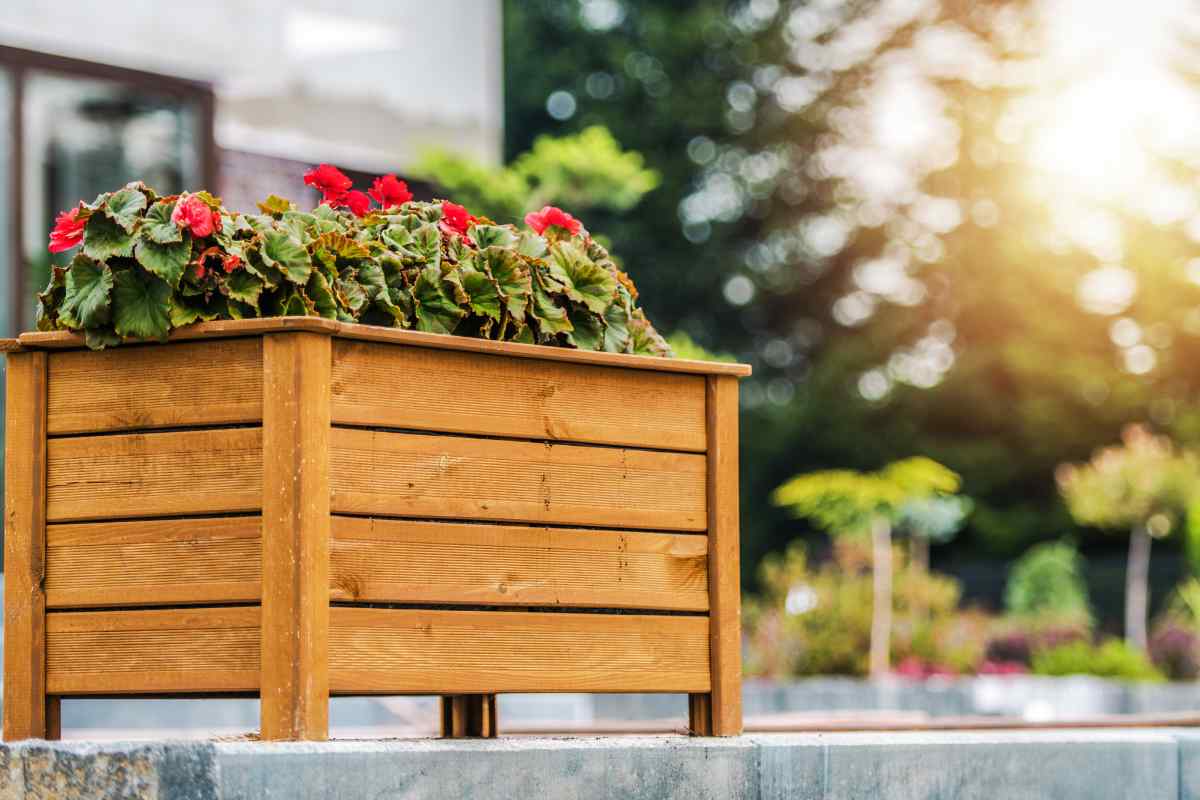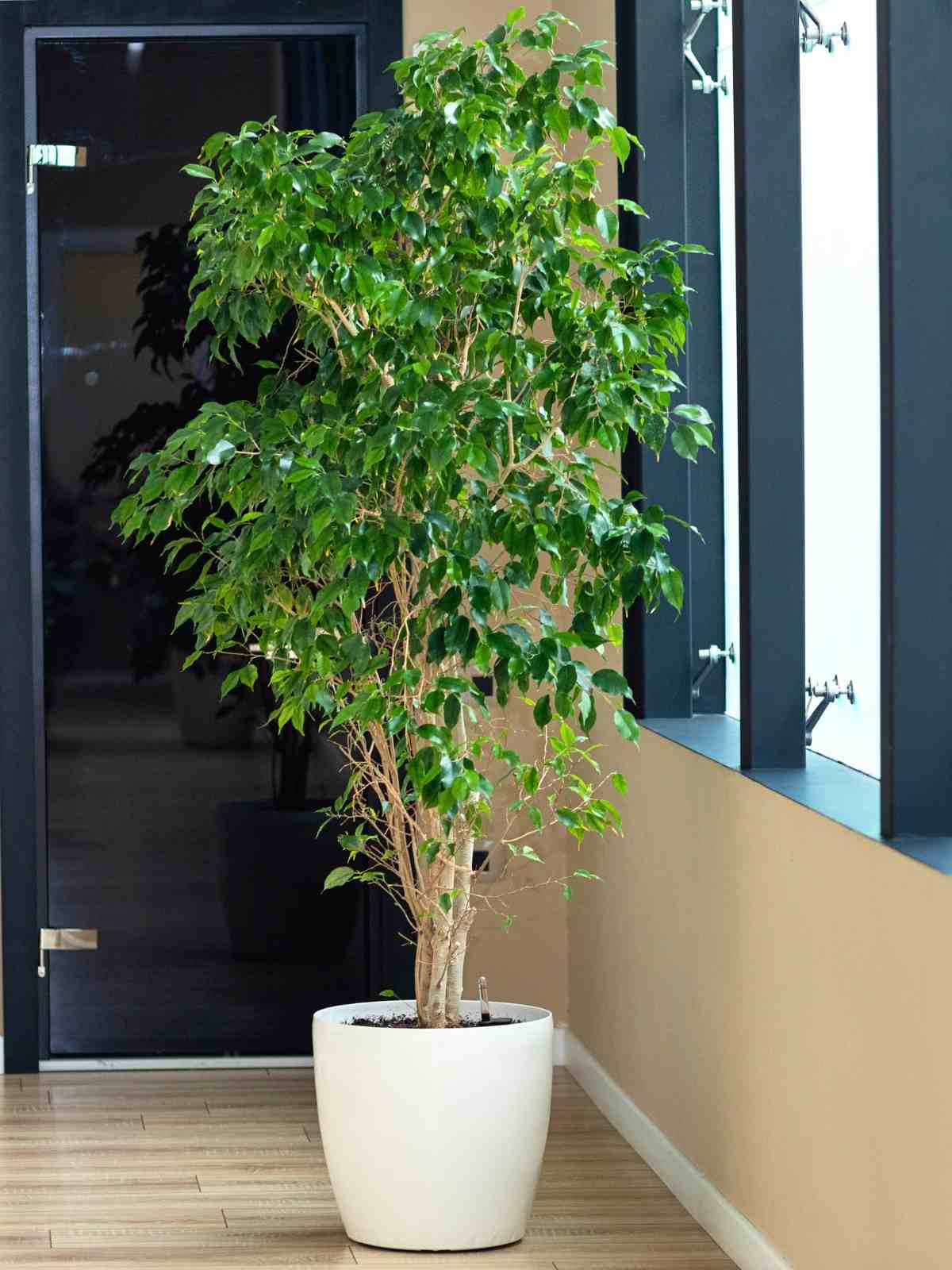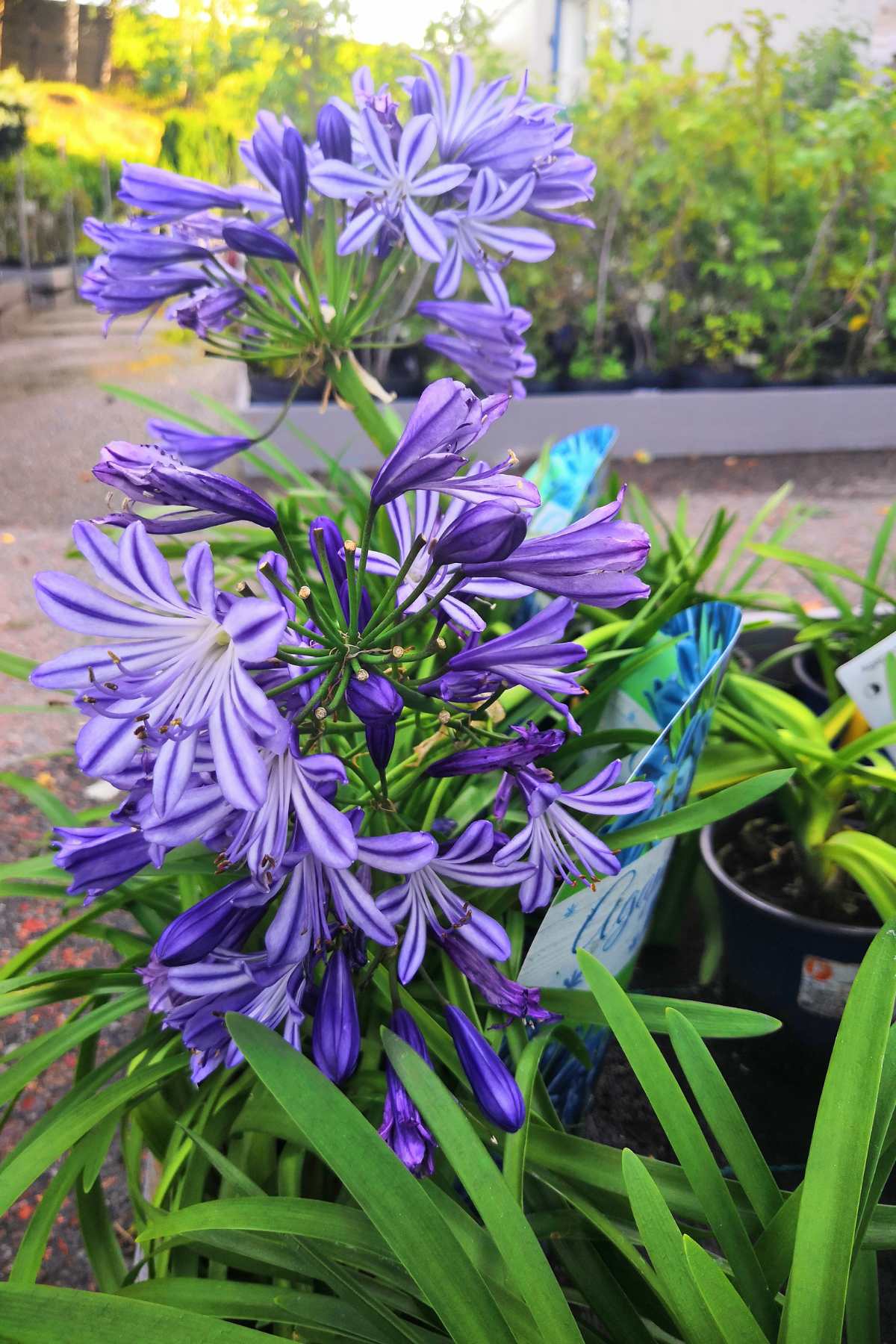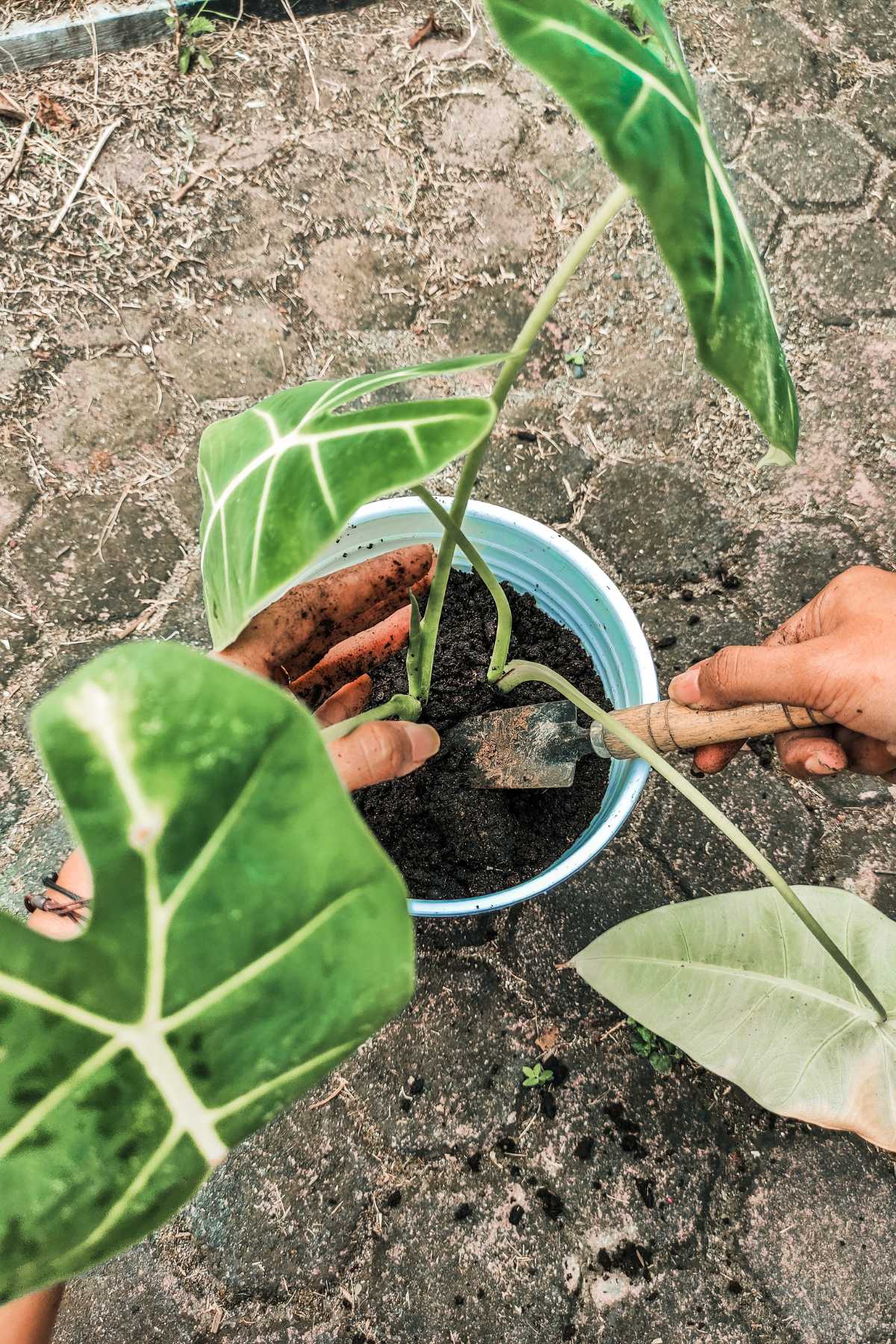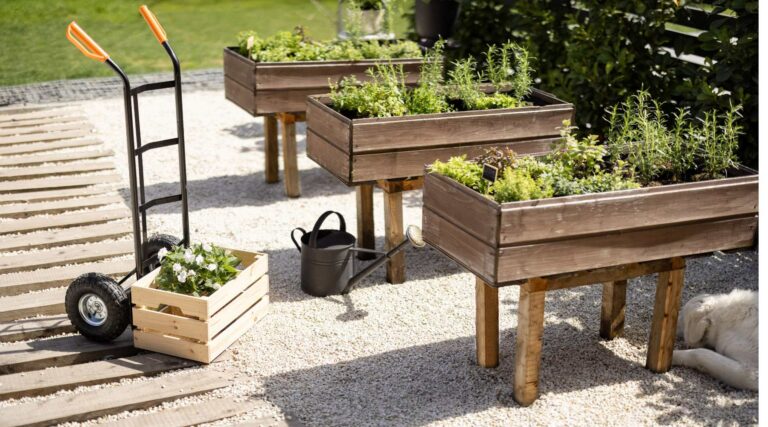Soil Improver / Conditioner: Types, Benefits + How To Use
Soil improvement is the cornerstone of a thriving garden. Healthy soil is crucial for strong plant growth, as it provides essential nutrients, supports root structures, and retains moisture. Introducing “soil improver” aka “soil conditioner” into your gardening routine can significantly enhance the quality of your soil, leading to healthier plants and higher yields.
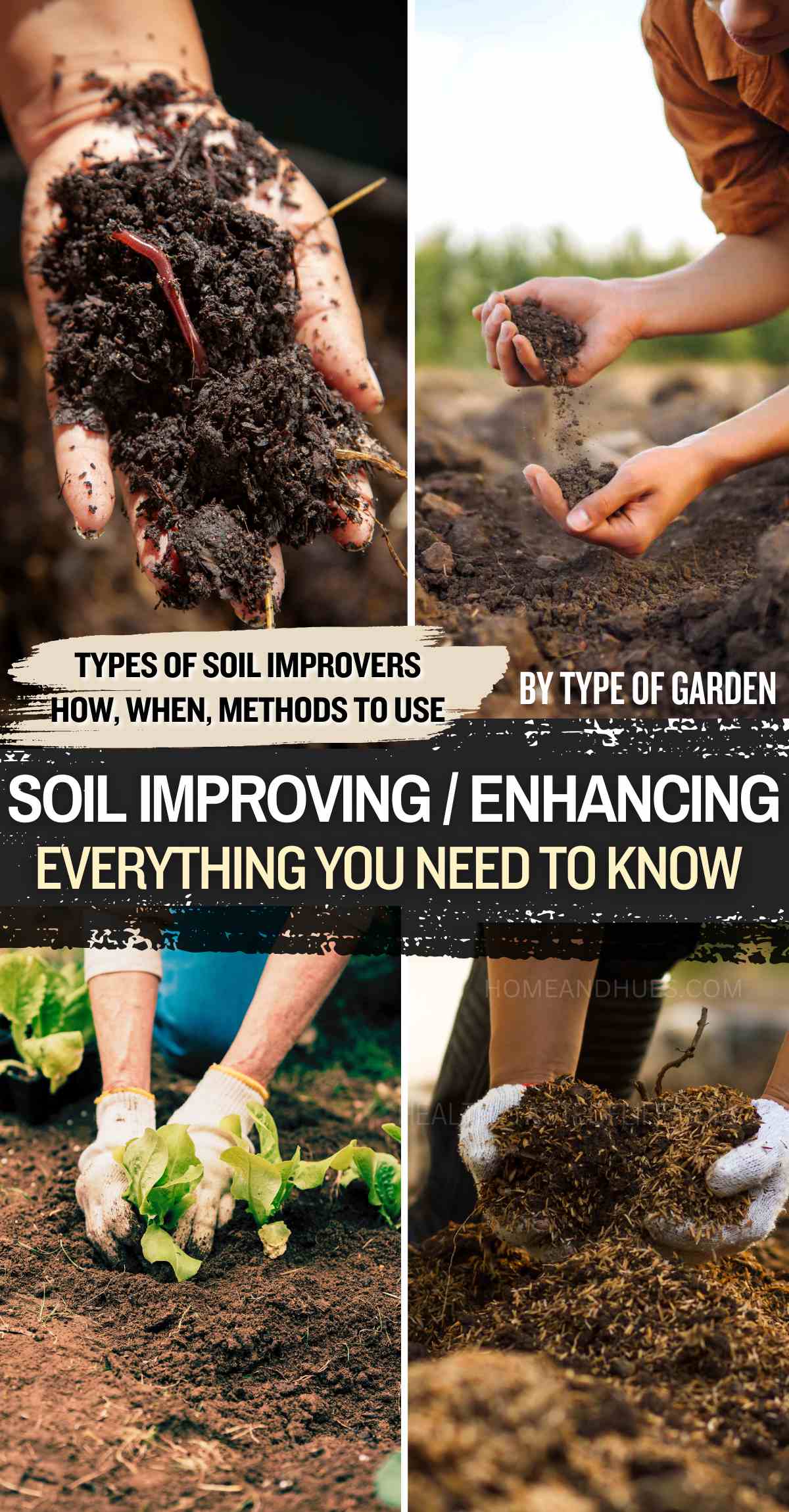
What is a Soil Improver?
A soil improver is any material added to soil to enhance its physical properties, such as structure, water retention, and nutrient content. Unlike fertilizers, which directly supply nutrients to plants, soil improvers aka “soil conditioners” primarily focus on improving the soil’s condition and structure, making it more conducive for plant growth.
Whether you choose a full open garden, planter boxes, or raised beds, improving your soil structure is the foundation of successful gardening
Related: Choosing The Best Wood For Your Planter Box / Raised Beds: Guide
Benefits of Using Soil Improvers
- Enhanced Soil Structure: Improved aeration and root penetration.
- Improved Water Retention and Drainage: Balanced moisture levels for plants.
- Increased Nutrient Availability: Better access to essential nutrients for plants.
- Healthier Plant Growth and Yield: More vigorous and productive plants.
Related: Choosing Liners For Wooden Planter Boxes (Types And How To Line)
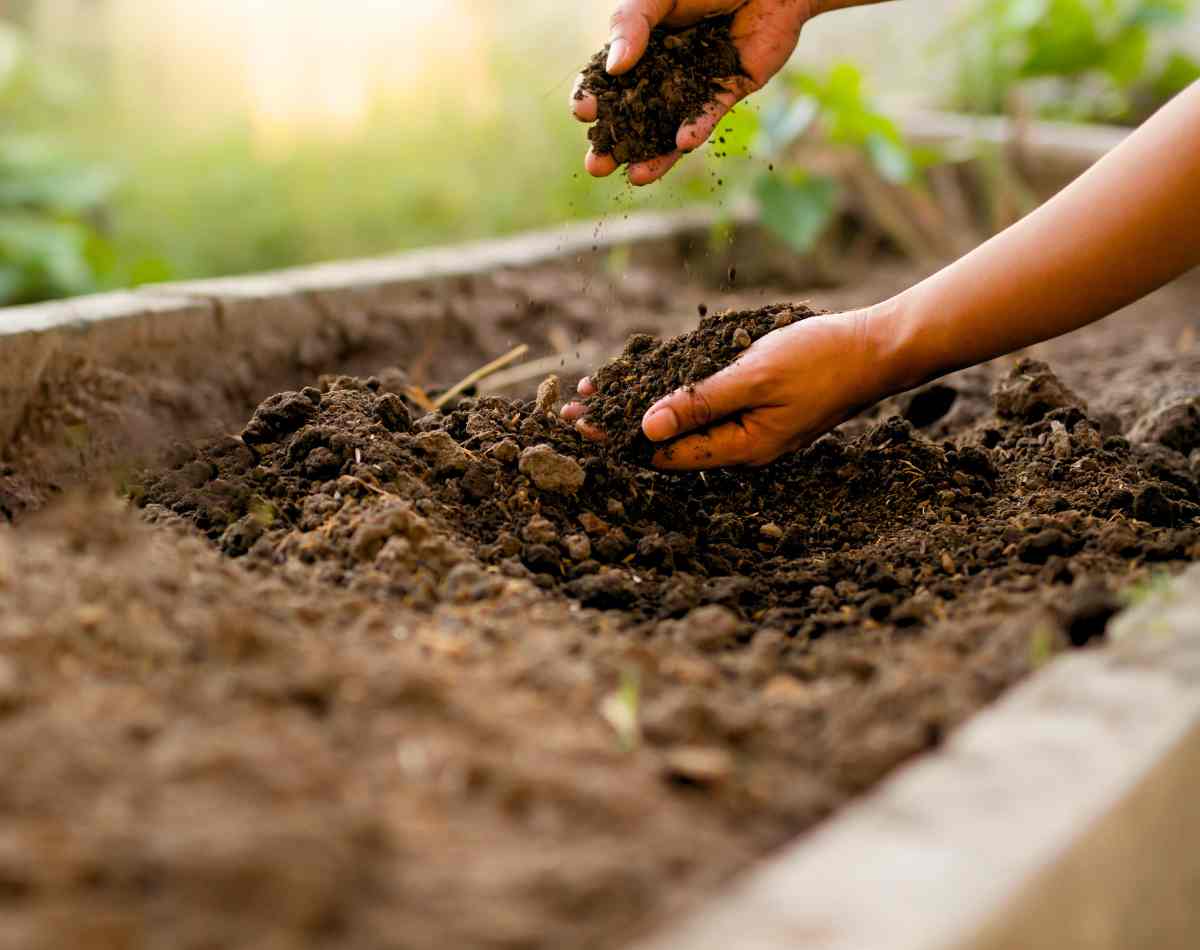
Is Soil Improver The Same As Fertilizer?
No, soil improver and fertilizer are not the same, although they both play important roles in gardening.
Soil improvers, such as compost, manure, and leaf mold, primarily enhance the physical properties of the soil. They improve soil structure, aeration, water retention, and microbial activity, creating a healthier environment for plant roots to grow.
Fertilizers, on the other hand, are specifically formulated to provide essential nutrients—such as nitrogen, phosphorus, and potassium—directly to plants to support their growth and development.
While fertilizers focus on feeding the plants, soil improvers focus on enhancing the overall soil health, making it more conducive to sustainable plant growth. Using both in combination is more optimal.
Types of Soil Improvers
Soil improvers can be broadly categorized into organic and inorganic types.
Organic Soil Improvers
1. Compost: Decomposed organic matter
- Benefits: Rich in nutrients, improves soil structure, enhances water retention, and boosts microbial activity.
- Best For: Most garden soils, particularly those lacking organic matter.
2. Manure: Animal waste
- Benefits: Adds organic matter and nutrients, especially nitrogen, which is essential for plant growth.
- Best For: Vegetable gardens and other nutrient-hungry plants.
- Note: Use well-rotted manure to avoid burning plants
3. Cover Crops (Green Manure)
- Benefits: Improves soil structure, fixes nitrogen (leguminous plants), and prevents erosion.
- Best For: Plants grown specifically to be plowed back into the soil to enhance fertility. Fall and winter soil protection and improvement.
- Examples: Clover, rye, and legumes.
4. Leaf Mold (Composted Leaves)
- Benefits: Excellent and easy to make for improving soil structure and moisture retention.
- Best For: Flower beds and vegetable gardens.
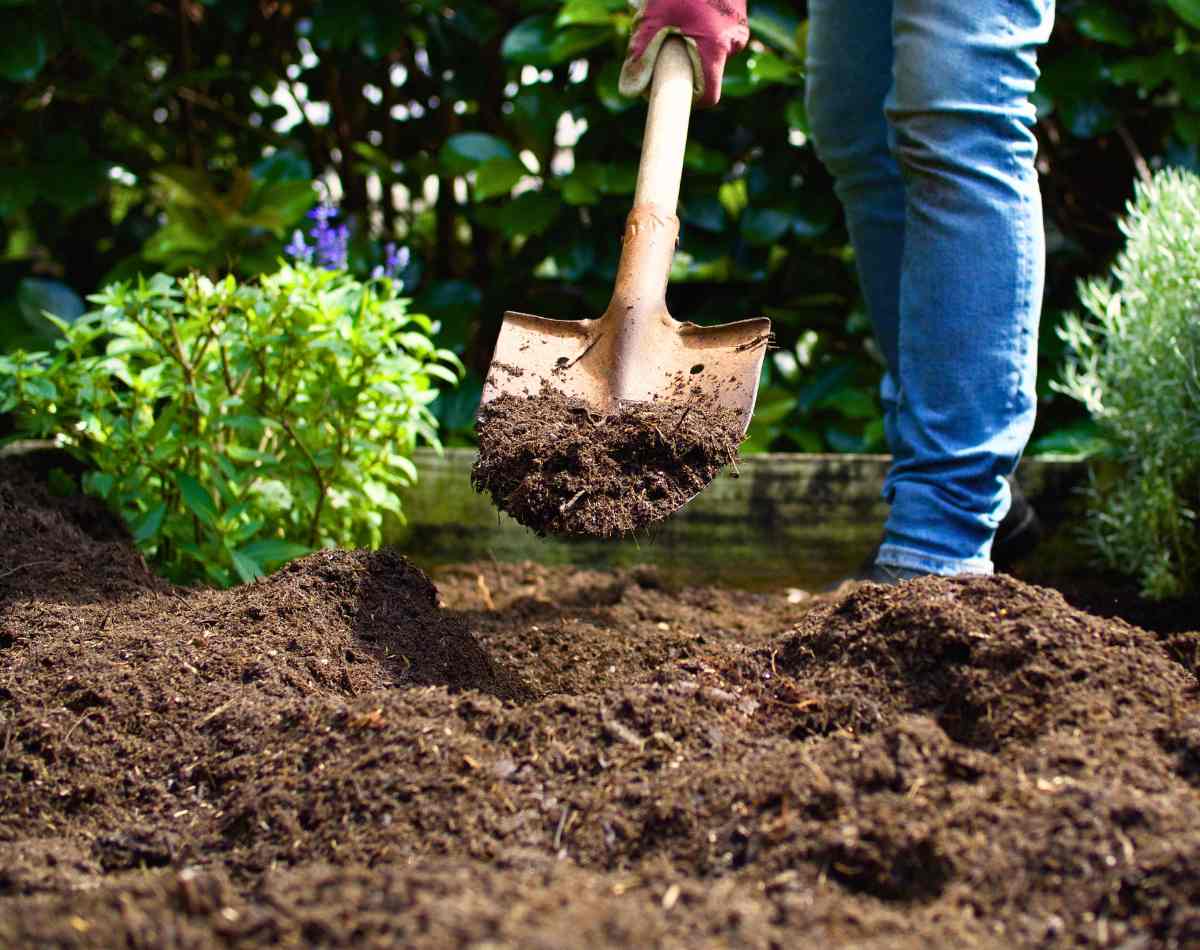
Inorganic Soil Improvers
- Lime: Raises soil pH (reduces soil acidity), improves structure, and adds calcium.
- Gypsum: Enhances soil structure and reduces compaction without altering pH, adds calcium and sulfur.
- Perlite and Vermiculite: Enhance aeration and water retention.
- Best For: Specific soil issues like acidity or compaction.
How To Choose the Right Soil Improver
The choice depends on your soil type and the specific needs of your plants. Here’s how to make the right selection:
1. Assess Your Soil Type
Test Your Soil: Conduct a soil test to determine pH levels, nutrient deficiencies, and overall soil health. Soil testing kits are available, or you can send samples to a local agricultural extension office for a detailed analysis.
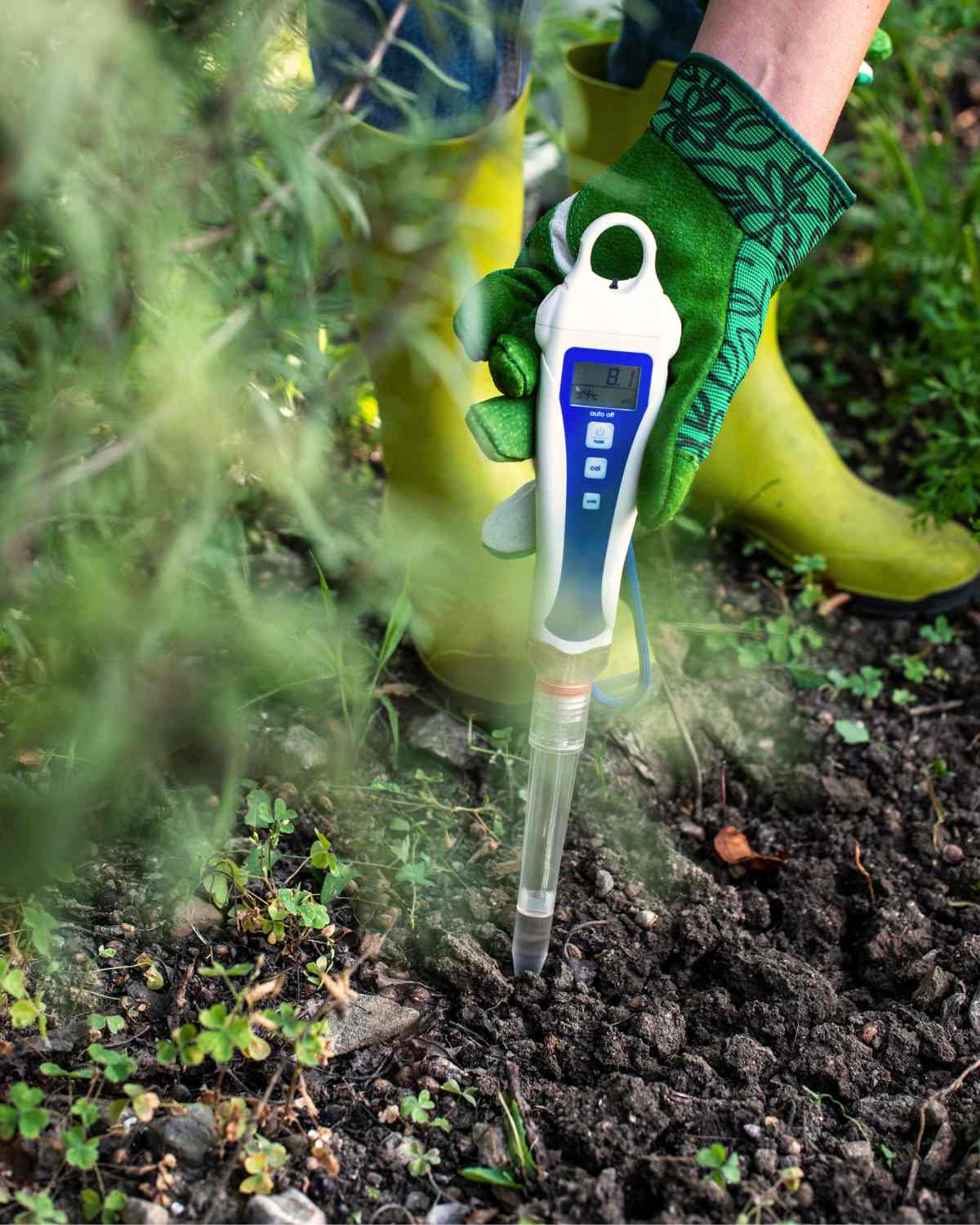
Identify Soil Texture
- Clay Soil: Heavy and dense, clay soil retains water well but drains poorly. It benefits from soil improvers that enhance aeration and drainage.
- Sandy Soil: Light and gritty, sandy soil drains quickly but struggles to retain nutrients and moisture. It requires soil improvers that enhance water and nutrient retention.
- Loamy Soil: Ideal for most plants, loamy soil has a balanced texture that retains moisture and nutrients while providing good drainage.
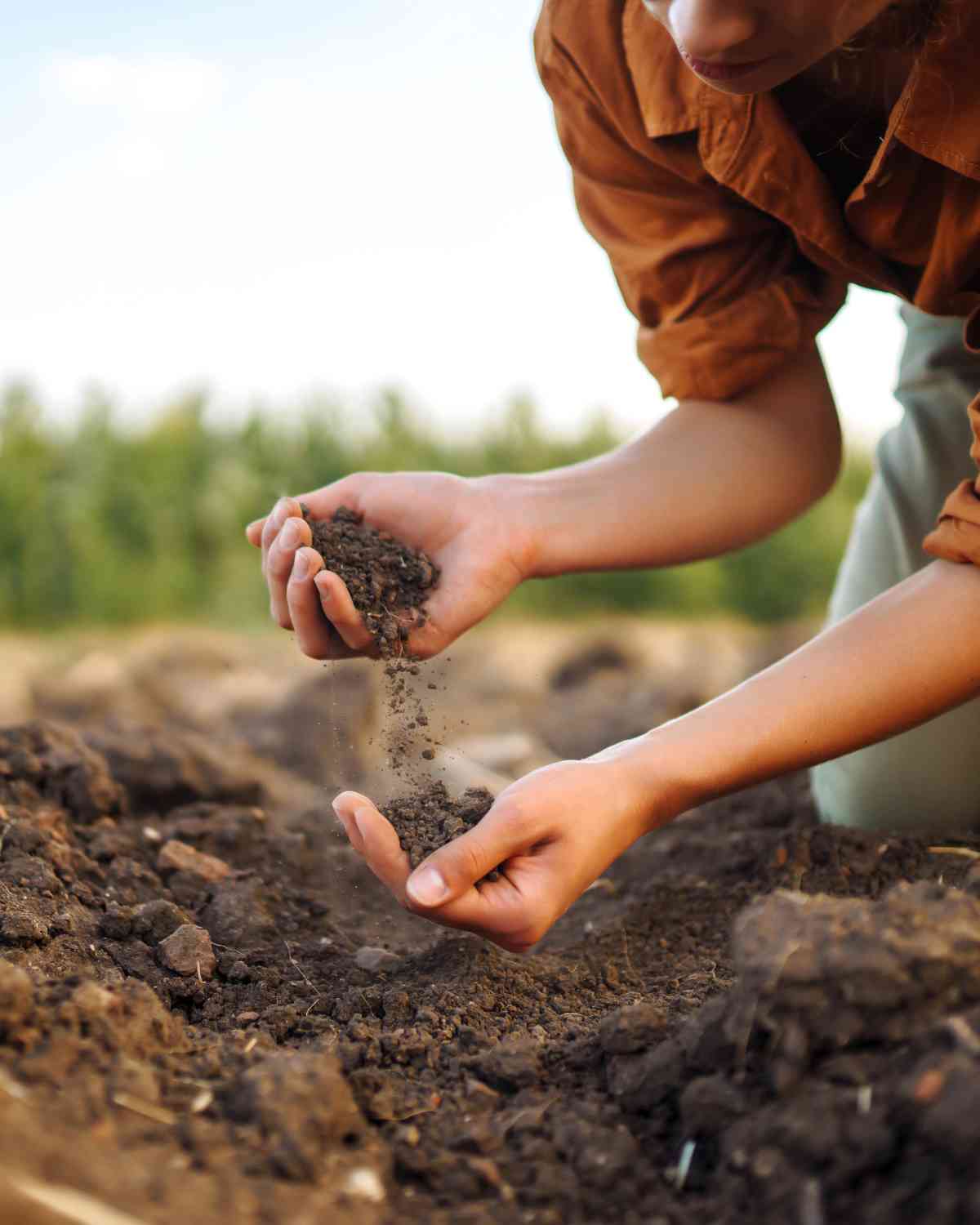
2. Understand Plant Needs
Nutrient Requirements
- High Nutrient Demand: Plants like tomatoes, corn, and leafy greens need nutrient-rich soil. They benefit from compost and manure, which provide a balanced mix of essential nutrients.
- Low Nutrient Demand: Plants like succulents and herbs require well-drained soil with moderate nutrient levels. They do well with light composting and inorganic amendments like perlite.
Specific Plant Preferences
- Acid-Loving Plants: Blueberries and azaleas thrive in acidic soil. Use soil improvers like pine needles or sulfur to lower pH.
- Neutral to Alkaline Preference: Most vegetables and flowers prefer neutral to slightly alkaline soil. Lime can be used to raise pH if necessary.
Recommendations for Different Gardens
Vegetable Gardens
- Compost and Manure: Enhance soil fertility and structure. Ideal for nutrient-demanding crops such as vegetables and fruit-bearing plants. Compost, created from decomposed organic matter like kitchen scraps, garden waste, and leaves, enriches the soil with a balanced mix of nutrients and beneficial microorganisms. It improves soil structure, promoting better aeration and water retention. Manure, particularly when well-rotted, adds a high concentration of organic matter and essential nutrients like nitrogen, phosphorus, and potassium.
- Green Manure (Cover Crops): involves planting specific crops like legumes (peas, beans, clover) during off-seasons to improve soil health. These plants are grown not for harvest but to be incorporated back into the soil. Leguminous cover crops are particularly beneficial as they have the ability to fix atmospheric nitrogen through their root nodules, enriching the soil with this essential nutrient. When these cover crops are tilled into the soil, they add organic matter, improve soil structure, and enhance microbial activity.
Flower Gardens
- Leaf Mold and Mulch: Improve moisture retention and add organic matter. Beneficial for perennial and annual flowers like lavender, peony, hosta, daylily, marigold, petunia, zinnia, geranium etc.
- Bone Meal: an organic fertilizer made from finely ground animal bones. An example is this fish manure compost. It is a rich source of phosphorus, which is a vital nutrient for strong root development and flowering.
Heads up: some links are affiliated & I may receive a small commission from qualifying sales. For more info see my disclaimer policy.
Lawns
- Gypsum: Improves soil structure and reduces compaction. Helps with drainage issues.
- Topsoil and Sand: For leveling and improving soil texture in heavy clay or compacted areas.
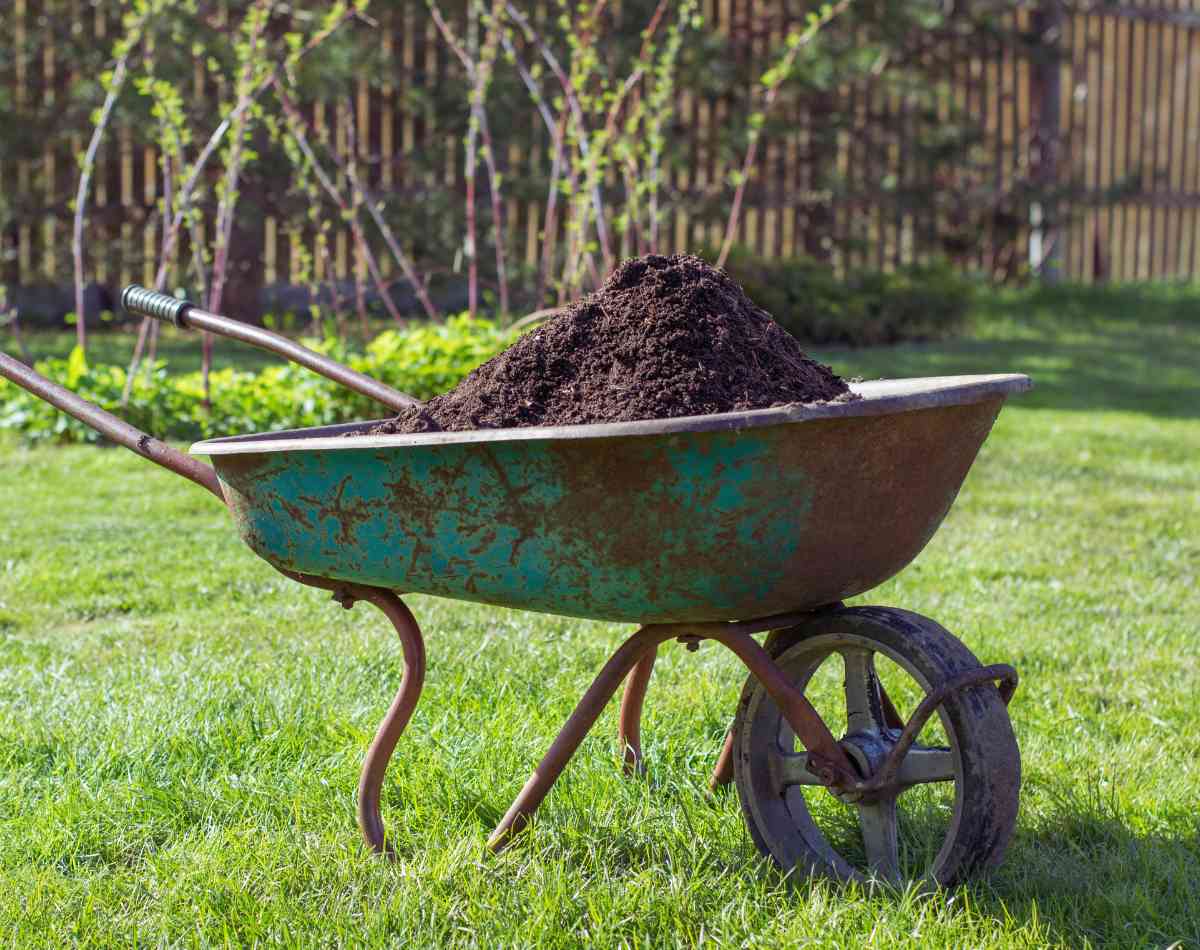
By assessing your soil type, understanding the needs of your plants, and choosing the right soil improvers, you can create a healthy, productive garden environment adapted to your specific conditions.
How to Apply Soil Improvers
Timing and method of application are crucial for maximizing the benefits of soil improvers.
Methods of Application
- Mixing into Soil: Incorporate soil improvers thoroughly into the top 6-12 inches of soil.
- Top Dressing: Spread a layer of soil improver on the surface of the soil.

When to Apply
The soil improver is best applied in early spring or fall when preparing garden beds. The soil is often workable after the winter thaw, making it easier to incorporate organic and inorganic materials. Applying soil improvers in early spring helps improve soil structure before the growing season begins. This is especially important for heavy clay soils, which can benefit from increased aeration and drainage.
Also adding compost, manure, and other organic soil improvers in early spring provides a nutrient boost just as plants are starting their growth cycle. This ensures that the soil is rich and fertile, ready to support seedlings and transplants.
Dos and Don’ts
- Do: Test your soil before application.
- Don’t: Overuse soil improvers, as it can lead to nutrient imbalances.
DIY Soil Improvers
Creating your own soil improvers at home is cost-effective and environmentally friendly. Here are a few examples of what can you use to improve soil quality:
1. Simple Composting
- Collect kitchen scraps like coffee grounds, eggshells, vegetable peels, fruit scraps, and tea bags, along with yard waste such as leaves, grass clippings, and small branches.
- These materials are layered in a compost bin or pile, ensuring a balance of green (nitrogen-rich) and brown (carbon-rich) components. Regularly turning the pile and maintaining moisture levels helps speed up the decomposition process, resulting in rich, dark compost. This nutrient-dense organic matter can be added to your garden soil, enhancing its fertility, structure, and water retention capabilities.
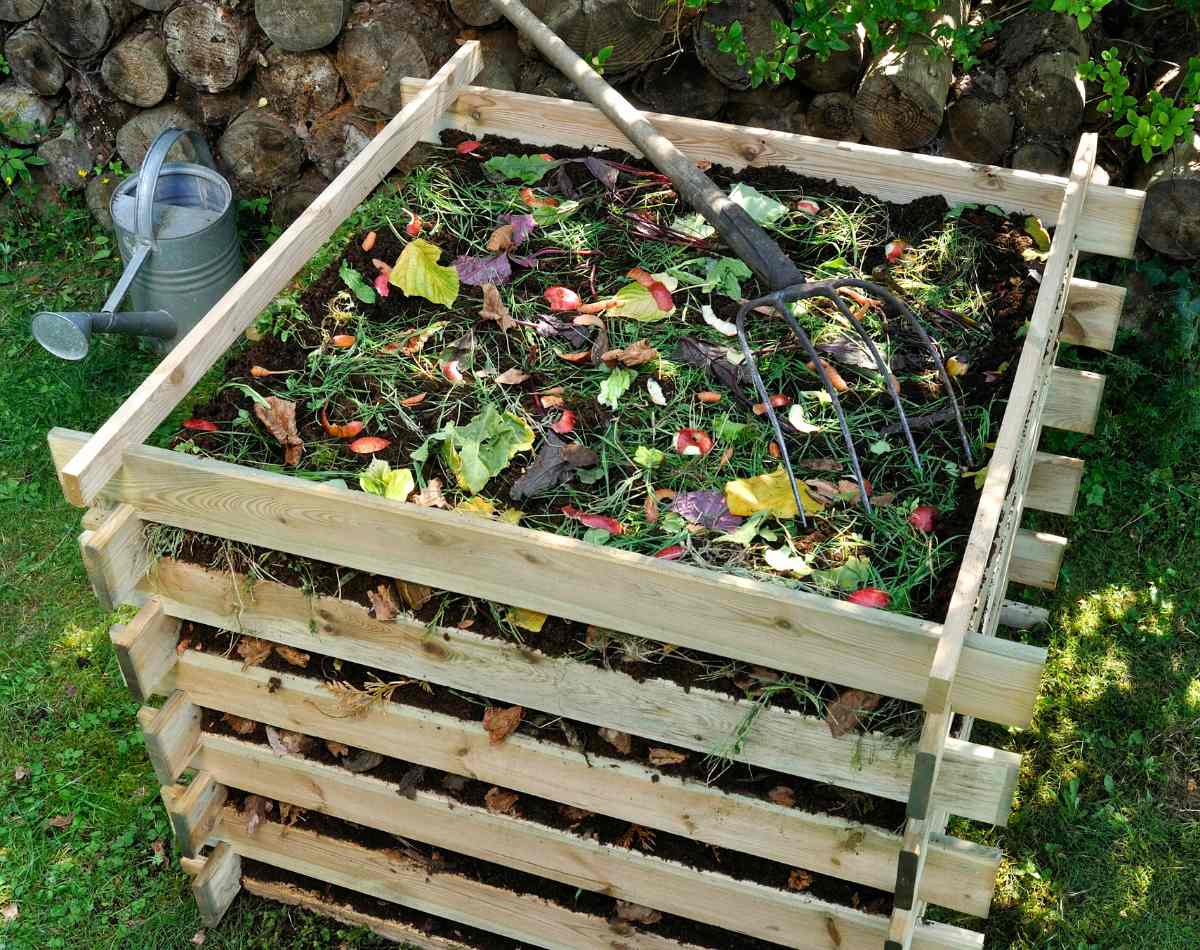
2. Making Leaf Mold
- Collect fallen leaves in the autumn and pile them up in a corner of your garden or in a dedicated compost bin and let them decompose over time. Shredding the leaves first can speed up the decomposition process.
- Keep the leaf pile moist, similar to a damp sponge, and turn it occasionally to introduce oxygen and promote even breakdown. Over the course of 6 months to a year, the leaves will decompose into a dark, crumbly material rich in organic matter.
- This leaf mold is excellent for enhancing soil structure, improving moisture retention, and providing a habitat for beneficial soil microorganisms. It can be used as a mulch, soil amendment, or added to compost to enrich its nutrient content.
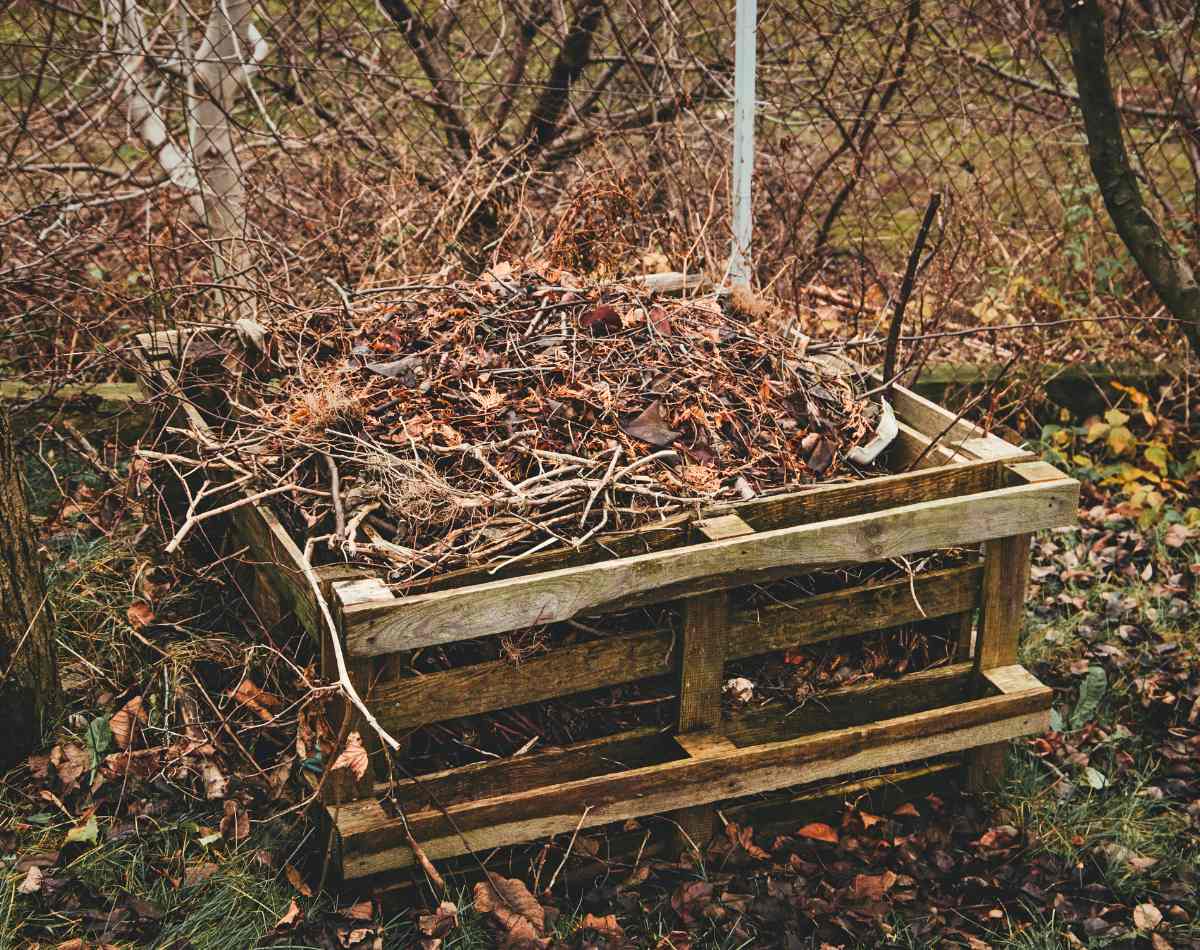
3. Using Kitchen Scraps
- Coffee grounds: Rich in nitrogen and can improve soil structure.
- Eggshells: Provide calcium and help balance soil pH.
- Vegetable peels: Add organic matter and nutrients to compost.
- Fruit scraps: Boost compost with natural sugars and nutrients.
- Tea bags: Enrich soil with organic material and nitrogen.
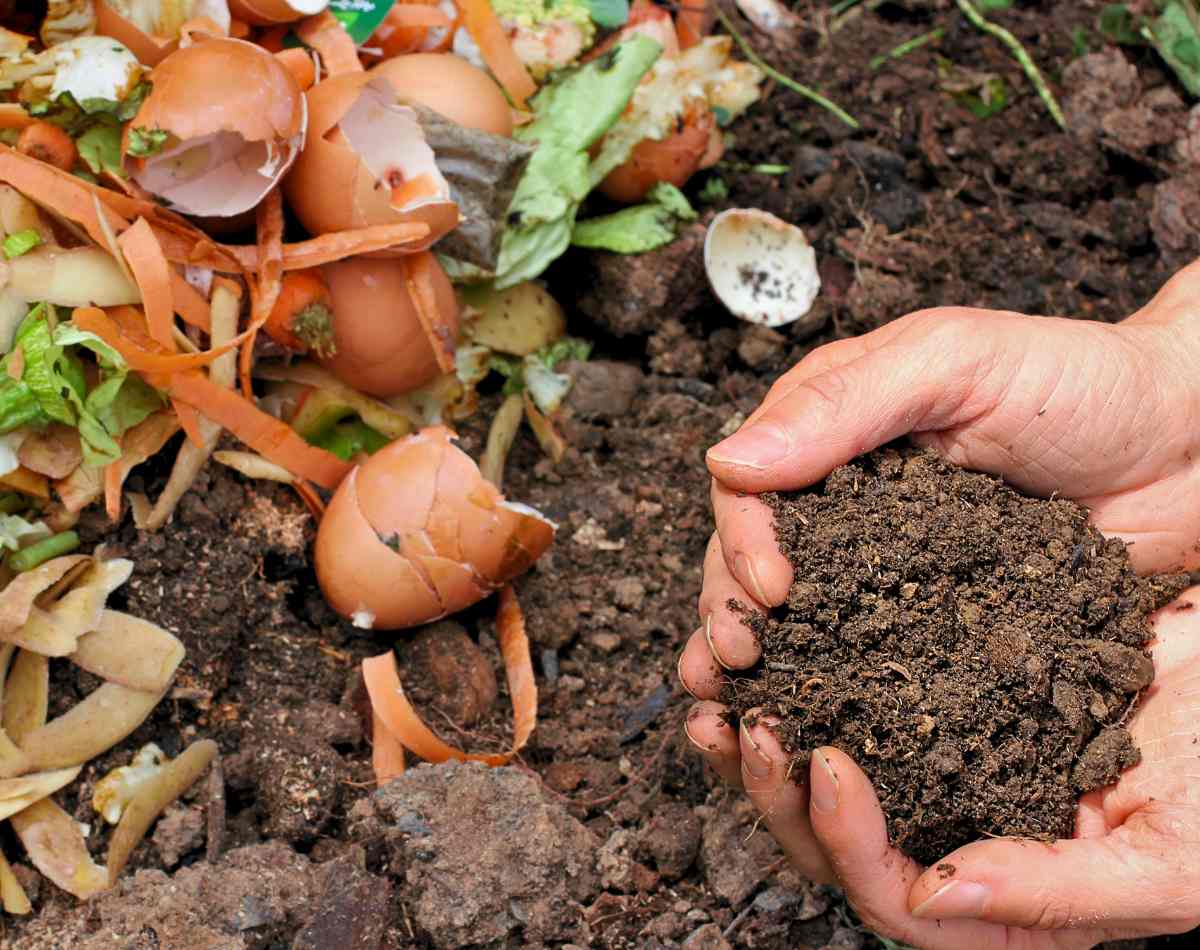
Practical Steps for Soil Improvement
- Conduct Soil Tests: Tailor your soil improvement plan based on specific needs.
- Add Organic Matter: Regularly incorporate compost and mulch.
- Grow Cover Crops: Use cover crops to add nutrients and prevent erosion.
- Rotate Crops: Prevent nutrient depletion and break pest cycles.
- Minimize Tillage: Preserve soil structure and microbial health.
Common Mistakes to Avoid
- Overuse: Can lead to nutrient imbalances and soil toxicity.
- Incorrect Application: Ineffective results if not applied properly.
- Neglecting Soil Testing: Applying soil improvers without knowing soil needs can be counterproductive.
How Long Does It Take to Rejuvenate and Improve Soil?
The time needed to rejuvenate and improve soil varies based on its initial condition and the methods used. Here’s a breakdown:
Immediate to Short-Term Improvements (1 Season)
- Organic Amendments: Adding compost or manure improves soil structure and nutrients quickly, with benefits seen within weeks to months.
- Mulching: Helps retain moisture and add organic matter, showing quick improvements.
- Cover Crops: Growing green manure crops like clover or rye improves soil within a single season by fixing nitrogen and adding organic matter.
Medium-Term Improvements (1-2 Years)
- Soil Testing and Adjustments: Adjusting soil pH with lime or sulfur can take a season or more.
- Organic Matter Build-Up: Regularly adding compost and mulch over a couple of seasons builds soil fertility and structure.
Long-Term Improvements (3+ Years)
- Comprehensive Soil Health: Continuous application of organic matter, cover cropping, crop rotation, and reduced tillage leads to a balanced, nutrient-rich soil over several years.
- Microbial Activity: Building a robust soil microbial community takes time and regular additions of organic matter.
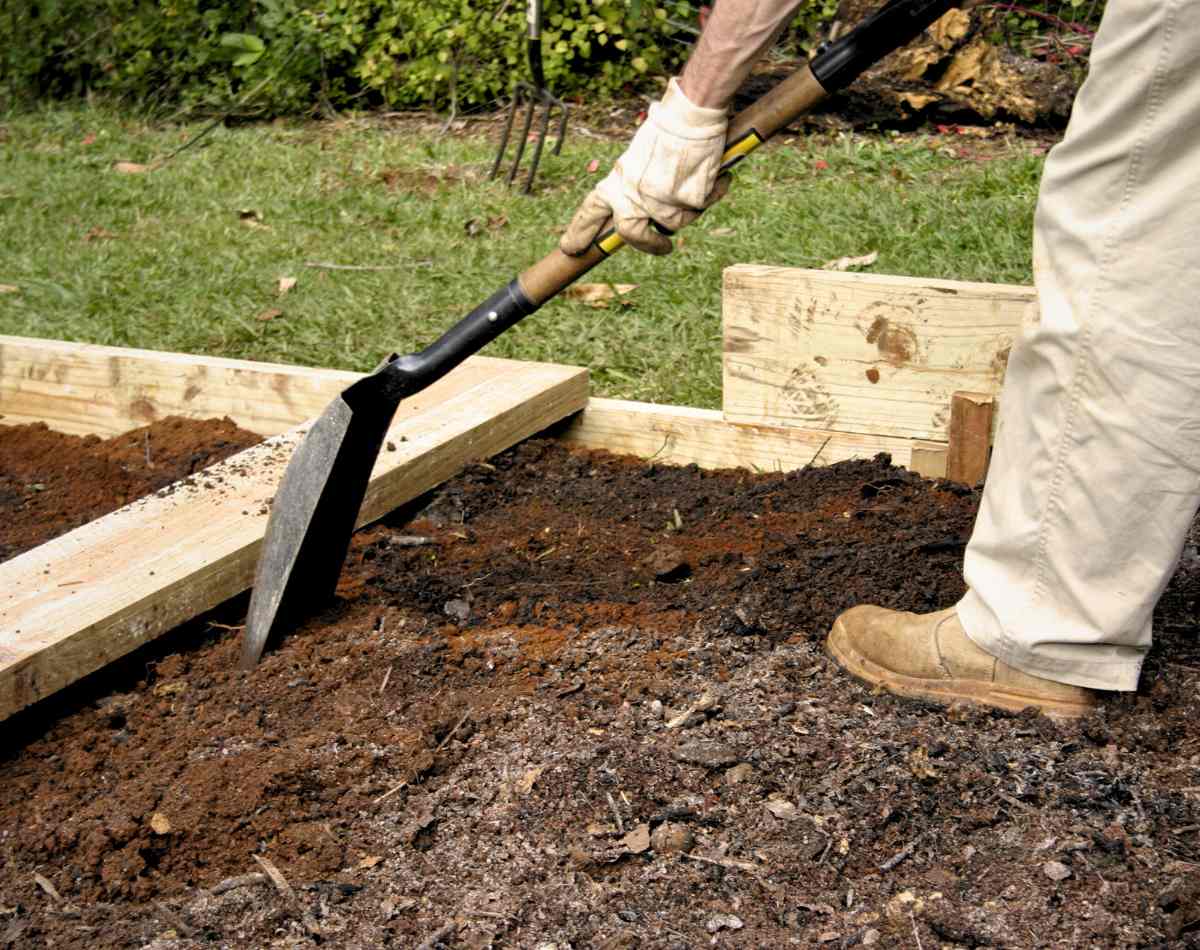
Consistent, sustainable practices will significantly improve and rejuvenate your soil, creating a fertile foundation for your garden over time.
The Best Overall Soil Improver
Compost is widely regarded as the best overall soil improver due to its numerous benefits and versatility:
- Nutrient-Rich: Compost provides a balanced mix of essential nutrients for plants, enhancing soil fertility.
- Improves Soil Structure: It helps create a loose, crumbly soil texture, improving aeration and drainage.
- Increases Water Retention: Compost enhances the soil’s ability to retain moisture, reducing the need for frequent watering.
- Boosts Microbial Activity: It introduces beneficial microorganisms that aid in nutrient cycling and disease prevention.
- Versatile Use: Suitable for all types of gardens, including vegetable beds, flower gardens, and lawns.
Is soil Conditioner and Soil Improver The Same Thing?
Yes, “soil conditioner” and “soil improver” generally refer to the same concept. Both terms describe substances added to soil to improve its physical properties, such as structure, aeration, water retention, and nutrient availability. While the terms are often used interchangeably, the specific benefits and applications can vary based on the particular product used.
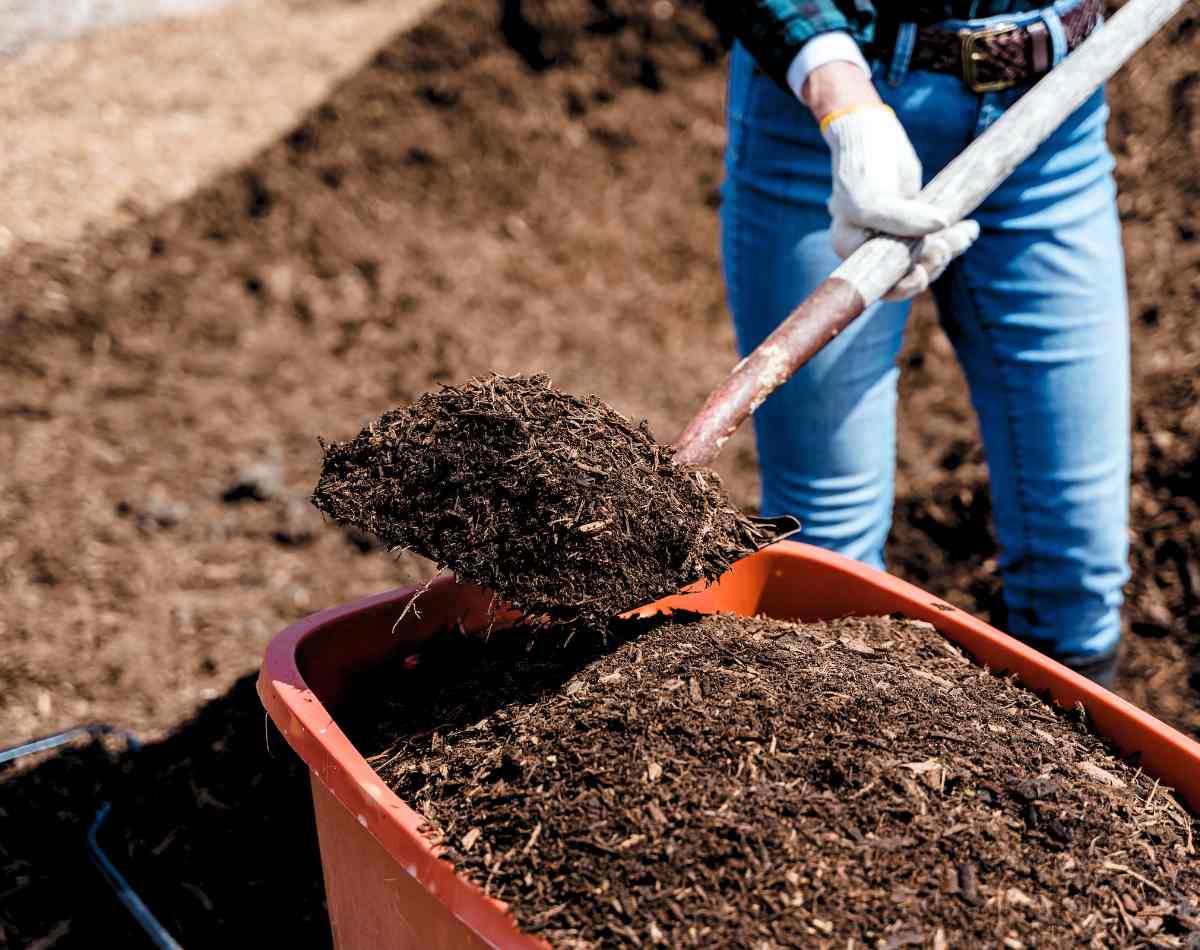
Can You Buy a Soil Improver?
Yes, you can buy soil improvers from various sources, including garden centers, nurseries, and online retailers. Some common types of commercial soil improvers available for purchase include:
Single Type
- Compost: Available in bags or bulk.
- Manure: Often sold in aged or composted form.
- Leaf Mold: Available in bags.
- Peat Moss: Enhances soil aeration especially beneficial for sandy soils.
- Coco Coir: A sustainable alternative to peat moss, coco coir improves soil structure and water retention.
- Biochar: A form of charcoal that enhances soil fertility and microbial activity.
- Inorganic Soil Improvers: Products like perlite, vermiculite, gypsum, and lime can improve soil structure and pH balance.
Pre-mixes
- Scotts® Foundation Soil Improver – A mix of coconut husk biochar, volcanic ash, and attapulgite clay – it enhances soil structure, increases nutrient retention, improves water holding capacity, and boosts microbial activity.
- The Andersons HumiChar Organic Soil Amendment – carbon-based soil amendment containing 50% high-quality humic acid and 50% granulated biochar. Humic acid, is a natural soil conditioner that improves nutrient uptake, promotes root development, and increases microbial activity. Biochar, a form of charcoal that enhances soil structure, water retention, and carbon sequestration. It can be applied to all crops and gardens.
- Persist Horticultural Biochar Soil Enhancer – a stable form of charcoal, produced through the pyrolysis of organic materials, making it an effective long-term solution for enhancing soil structure, water retention, and nutrient retention. Its porous nature allows it to act as a habitat for beneficial soil microorganisms, further boosting soil fertility. Ideal for a variety of horticultural applications, Persist Biochar is a sustainable and environmentally friendly option for gardeners and farmers aiming to improve soil quality.
When choosing a soil improver, consider the specific needs of your soil and plants to select the most appropriate product.
Soil improvers play a vital role in creating and maintaining a healthy garden. By assessing your soil, choosing the right improvers, and applying them correctly, you can significantly enhance your garden’s productivity.
Try a soil improver in your garden and share your results with our community!

